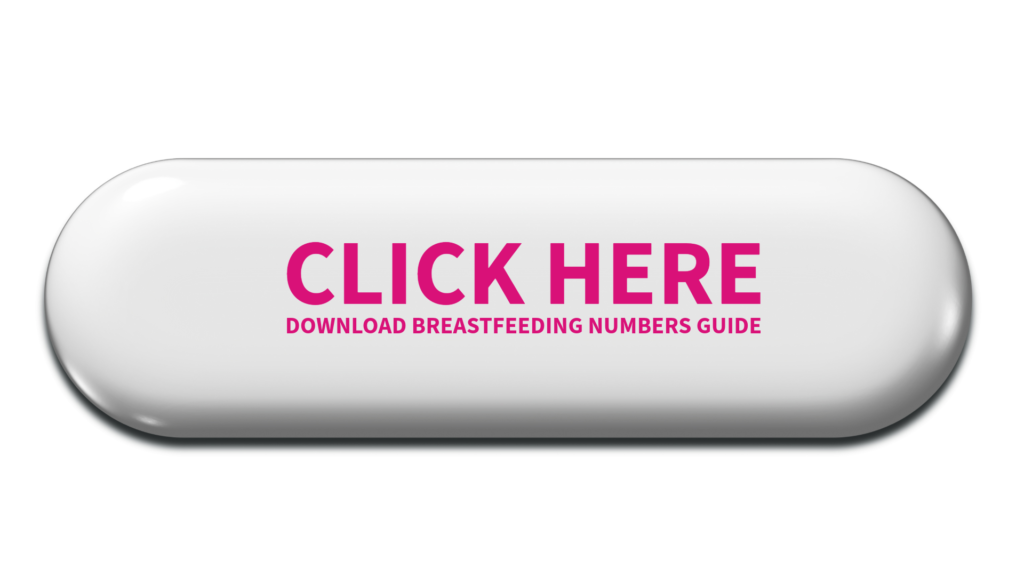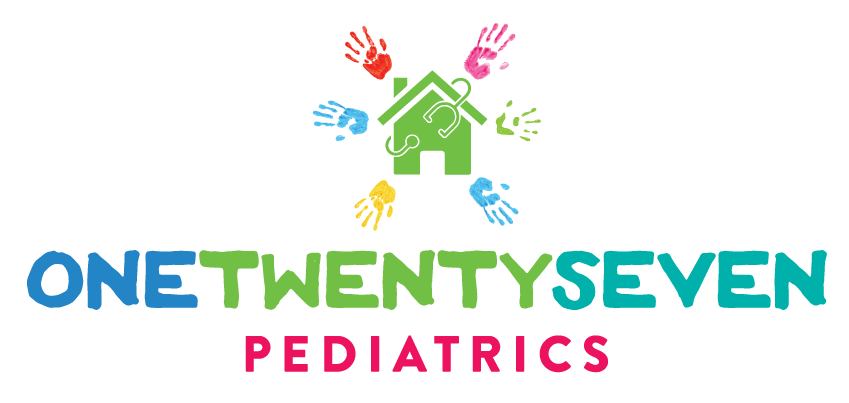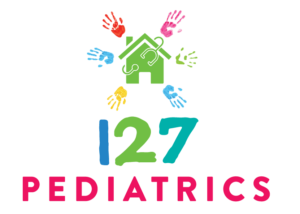Breast milk is often referred to as liquid gold. There is a good reason that it earned this nick name. Colostrum is an early form of breast milk. Its golden hue and magical properties sustain a newborn in the early hours after birth.
Breast milk production begins towards the end of pregnancy and continues for as long as there is regular milk removal from the breast. Initially, your breasts produce colostrum. After this stage of breast milk production, it will become transitional milk and finally mature milk.
Let’s learn more about colostrum, its benefits and how it becomes mature breast milk.
Colostrum is Gold
Colostrum is the initial milk produced by all mammals. This golden colored liquid is characterized by its thickness and color. It embodies the phrase “good things come in small packages.” In the early days after birth, a postpartum mother will produce a few teaspoons of colostrum per day.
Initially, colostrum production begins during pregnancy and continues for the first few days after giving birth. It has magical properties that support the newborn’s health. This early breast milk achieves its golden hue because it is composed of a high concentration of beta carotene.
Additionally, despite its small volume, colostrum has a significant impact on a newborn’s health beyond their early days. In the first few days postpartum, the tight junctions between the cells in the breast are open and allow for the flow of white blood cells and nutrients into the breast milk.
In addition, colostrum also has growth factors. These factors have been shown in animal models to aid in the development and health of the newborn’s gut. Furthermore, high-quality colostrum includes antimicrobial peptides that help newborns combat infections from viruses and bacteria.
When Does Colostrum Change to Mature Milk?
Colostrum production starts at around 16 weeks of pregnancy. It continues until a few days after giving birth. In late pregnancy, you may be able to express small amounts of milk. However, copious milk production is suppressed by pregnancy hormones. After giving birth, removal of the placenta signals your body to start making increasing volumes of breast milk. Initially, this breast milk comes in the form of colostrum.
Next, as your pregnancy hormones levels continue to decline, your breasts receive the signal to begin copious milk production. This stage is called Lactogenesis 2 or better known as your milk “coming in.” Most women experience this stage around 72 hours after giving birth. At this stage, your body starts to produce more mature breast milk. As this transition from colostrum to mature breast milk takes place, we call it transitional breast milk.
Lastly, your milk is considered mature milk about 2-4 weeks after delivery. This type of milk is thinner, bluish-white in color, and produced in larger quantities compared to colostrum. Once your milk reaches the stage of maturity, your breasts should produce about 24-30 ounces of milk in an entire 24 hour period.
Colostrum vs. Breast Milk
Colostrum differs from mature breast milk in ways that serve a specific purpose for nourishing and protecting newborns in their first few days of life.
One of the discernible distinctions is in the physical characteristics. Colostrum is denser and possesses a sticky texture, as opposed to the thinner and more diluted nature of mature breast milk. Additionally, colostrum displays a more yellowish hue, attributed to its elevated concentrations of vitamin A precursors.
Colostrum has more nutrients than mature breast milk. It has high levels of proteins, which are important for growth and development. Colostrum also has more zinc, which helps with immune function and overall health. It is also filled with immunoglobulins, or antibodies, which help protect against infections and diseases.
Early breast milk is designed for newborns. It helps their immature immune system develop and provides nourishment in their early days. Human milk adapts to the baby’s needs at different stages of growth.
Advantages of Early Breast Milk
As we have examined earlier, colostrum provides numerous benefits to newborn babies.
Specific Health Benefits:
- Protection against infections and diseases
- High levels of proteins
- Increased fat content
- High concentration of zinc
- Small milk volume fits perfectly in a newborn’s small stomach
Significance of Colostrum for the Premature Baby
Premature infants start off life at a disadvantage. Depending on how early in gestation that a baby is born, premature babies may miss out on some important nutrients. For example, about 80% of calcium, magnesium and phosphorus are transferred to the fetus through the placenta during the third trimester. In addition, infants who are born early are more susceptible to infection and illness due to their immature immune system. Human colostrum can fill in those gaps to help a new baby to thrive.
Occasionally, infant formula supplementation is required for premature babies in order to get these extra required nutrients. However, human breast milk provides protection of the infant’s gut. There are many studies that show that breast milk is a better first food for these infants. It protects the gut from the horrible disease of necrotizing enterocolititis (NEC). This is something that mothers should take into consideration when deciding between expressing human milk vs formula feeding their new premature infant.
Additionally, the benefits of colostrum for both premature and full term infants are numerous:
- Human colostrum coats the mucous membranes with specific antibodies which lowers the risk of infections in the respiratory and gastrointestinal tracts.
- It also acts as a reliable laxative, helping the passage of meconium and more mature stools.
- Adequate colostrum provides essential nutrients and calories to support the newborn in the early days of life
- Small volume prevents overfeeding the preterm infant which reduces the risk of gastrointestinal distress.
How to Express Colostrum
Due to its small volume and sticky texture, colostrum is difficult to extract with a breast pump. In theory, the baby will extract the colostrum from your breasts at regular intervals during nursing sessions in the first couple of days of life. However, if you are separated from your baby or your baby is not latching to the breast for whatever reason, you may need to remove the colostrum yourself. The best way to remove this first milk is through hand expression.
In order to hand express breast milk, you need to start with clean hands. Next, you need to gently massage your breasts in order to “wake” them up. After that, you can position your hand in a “C” formation encircling just behind the areola of one breast. Then, gently push back with your fingers until drops of milk are visible on the nipple. Repeat this for several minutes until you have filled a spoon or syringe with colostrum.
If you are expressing milk because your baby is sleepy or not latching, you can repeat hand expression as often as needed. If you are expressing because you are separated from your baby, you may need the extra stimulation of the electric breast pump as well. You will not see much milk expression with the breast pump if you are in the early hours of your postpartum journey, but the extra stimulation for your breasts will greatly benefit your milk supply long-term.
How Milk Volume Changes
Human breast milk volume changes over the course of your breastfeeding journey. In the early days postpartum, breastfed babies will eat approximately one teaspoon of colostrum every few hours. During the first two days of life, your breasts will produce approximately an ounce of breast milk in the entire day. As you continue to feed your baby at the breast or express milk at regular intervals with the breast pump, the volume of milk will increase gradually. Around 3-5 days postpartum, most women enter the phase of breast milk production known as copious milk production. The volume of breast milk in this stage will increase in volume dramatically from the previous days. An increase in milk production will continue until your milk reaches the stage of mature milk.
Lastly, between 1 month and 6 months postpartum, your breasts will produce a stable amount of human milk in a 24 hour period. For most women, this is approximately 24-32 ounces of breast milk per day. The amazing thing about human milk composition is that it changes as the baby grows. Therefore, your baby doesn’t need increasing volumes of milk and your breasts don’t need to make excess milk. This is one of the incredible features of breast milk vs formula.
127 Pediatrics is Here to Help You with Breastfeeding
As a dedicated breastfeeding medicine expert and a mom who’s walked the same path, I’ve crafted something just for you – a free guide designed to demystify the numbers that often seem so daunting. “Crack the Secret Code of Breastfeeding Math” is more than just a guide; it’s a beacon of confidence on your breastfeeding journey.
This invaluable tool is here to reassure you that you’re not just on the right path, but thriving on it. Whether it’s understanding your baby’s weight gain, managing your pumping schedule, or ensuring you’re meeting those all-important breastfeeding milestones, this guide has got you covered.
Confident breastfeeding starts here. Download the free guide now!

© 127 Pediatrics, April 2024
This article is for information purposes only. Please consult your personal physician for medical advice.

Dr. Andrea Wadley is a pediatrician and lactation consultant. She is also board certified in breastfeeding medicine. She started 127 Pediatrics in July 2018 as a way to provide a different option for both pediatric and breastfeeding care for families in her community and beyond.


